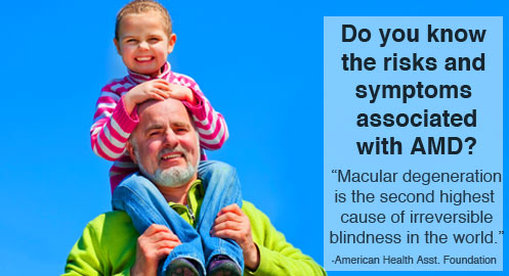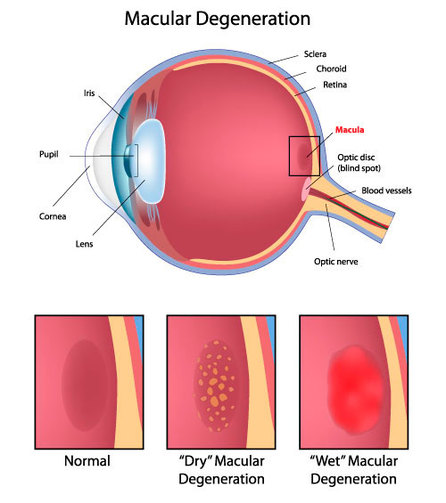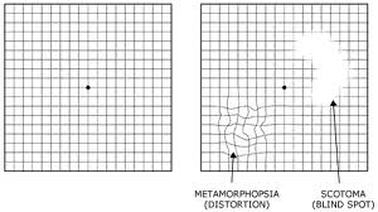what is macular degeneration?

Age related Macular Degeneration (AMD) is a common eye condition among people age 50 and older. It is a leading cause of vision loss in older adults. It gradually destroys the macula, the part of the eye that provides sharp, central vision needed for seeing objects clearly.
In some people, AMD advances so slowly that vision loss does not occur for a long time. In others, the disorder progresses faster and may lead to a loss of vision in one or both eyes. The vision loss makes it difficult to recognize faces, drive a car, read, print, or do close work, such as sewing or fixing things around the house.
Despite the limited vision, AMD does not cause complete blindness as it generally does not effect side (peripheral) vision.
In some people, AMD advances so slowly that vision loss does not occur for a long time. In others, the disorder progresses faster and may lead to a loss of vision in one or both eyes. The vision loss makes it difficult to recognize faces, drive a car, read, print, or do close work, such as sewing or fixing things around the house.
Despite the limited vision, AMD does not cause complete blindness as it generally does not effect side (peripheral) vision.
what are the risk factors?
- Age: both the incidence of AMD and the significance of vision loss increases with age
- Genetics: variants of Complement factors H & B, which play
- UV
- Smoking
- Hypertension
- Obesity or Inactivity
- Lighter eye Color
what are the 2 forms of AMD?There are two forms of AMD: dry and wet. Either form can advance and cause severe vision loss.
The dry form is more common and has three stages-early, intermediate, and advanced. It happens when the light-sensitive cells in the macula slowly break down, gradually blurring central vision in the affected eye. The wet form is considered advanced AMD and can be more severe. It happens when new blood vessels under the macula leak blood and fluid. Damage to the macula can occur rapidly. All people who have the wet form had the intermediate stage of the dry form first. The dry form also can suddenly turn into the wet form, even during early stage AMD. There is no way to tell if the dry form will turn into the more severe wet form but it can occurat any time. what are the symptoms of AMD?
|


